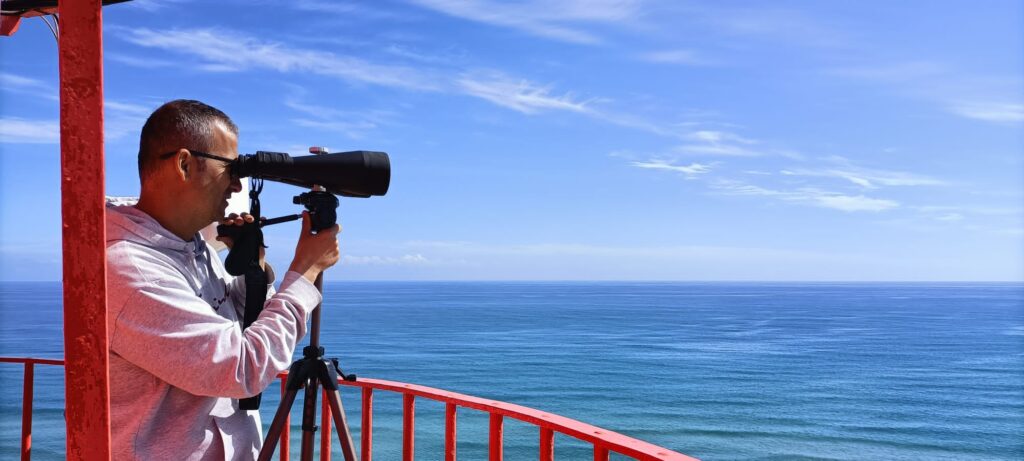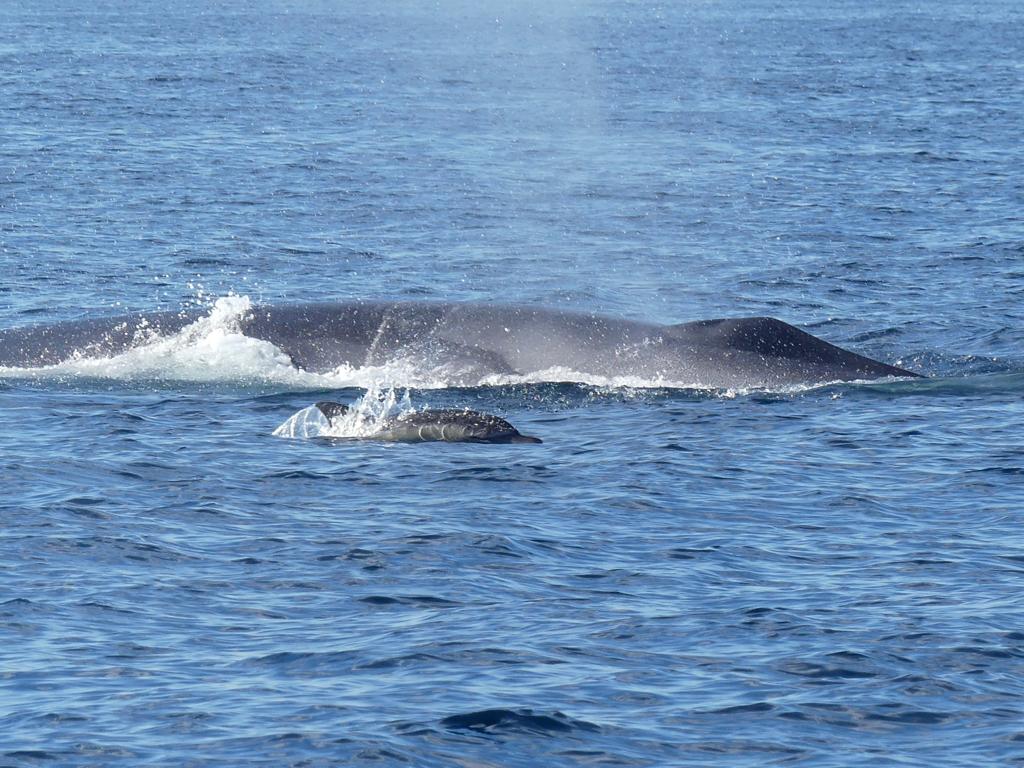Understanding and evaluating the abundance of cetaceans on the Algarve coast in observations from land is the main objective of the new doctoral thesis by Rui Peres dos Santos, a marine biologist at the Centro de Ciências do Mar (CCMAR) of the Algarve, in the context of which he also whether to study the use of lookouts (people who observe the sea in search of cetaceans) in the detection of these animals.
The study by the researcher at this Algarve research center «will allow us to catalog the species that cross the Algarve waters, the time of year when they do so, their abundance and behaviors they exhibit, serving as a basis for measures to protect and mitigate maritime activity. -local tourism'.
«The fieldwork started with observations from the Farol of Santa Maria (Faro) and, between October and March, more than one hundred sightings of various species have already been recorded, mainly dolphins, bottlenose dolphins and common whales, and the fin whale», according to CCMAR.
Currently, “three observations are carried out per week, each comprising three scans of the horizon, where visibility normally allows monitoring up to six miles and can reach 12 (11 and 22 kilometers, respectively)”.

In January, observations were also made from Praia da Falésia (Vilamoura) «expanding the observed maritime area, now covering two distinct areas with different numbers of vessels operating».
«The study also intends to contribute to assess the potential of the use of lookouts by marine life observation companies. In the Algarve region, 121 cetacean observation vessels are registered. As a complement to this doctoral work, a master's thesis is being carried out on the impact of whale observations in the Algarve», added CCMAR.
Rui Peres dos Santos has experience working with maritime tourism companies in the Azores, «where the activity is an important source of income and contributes to the image of the region. The guards play an essential role in the detection of animals and the consequent satisfaction of tourists”.
This research is funded by the Fundação para a Ciência e Tecnologia, is part of the R2C2 research group (Resources, Restoration, Connectivity and Climate) and is supervised by Professor Rita Castilho (CCMAR/UAlg) and Richard Sears (Mingan Island Cetacean Study ).
The fieldwork is supported by several students from the Masters in Marine Biology at the University of Algarve, at the Faculty of Marine and Environmental Sciences at the University of Algarve, «who participate in the observations of the maritime-tourist company Ocean Vibes, which has been instrumental in access to the sea, of the National Maritime Authority (which granted access to the farol), CP – Comboios de Portugal, in transporting the researchers and finally RAAlg (Rede de Arrojamentos do Algarve)».


















Comments